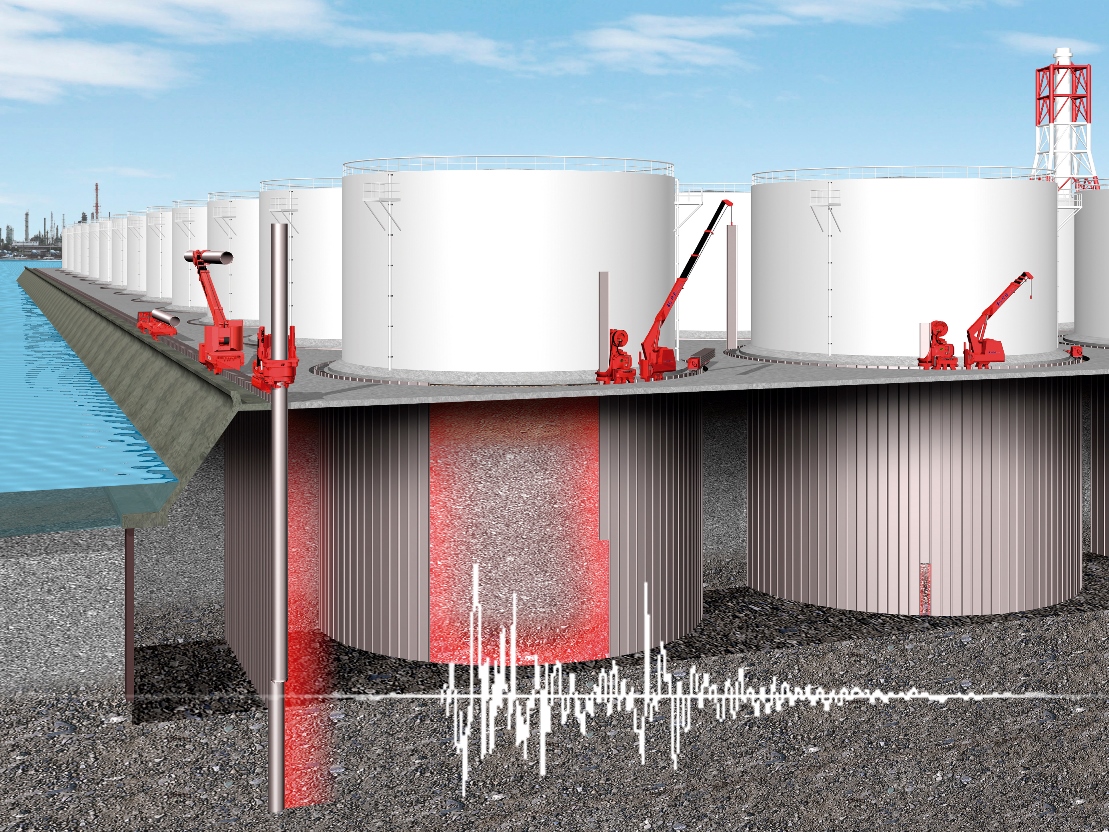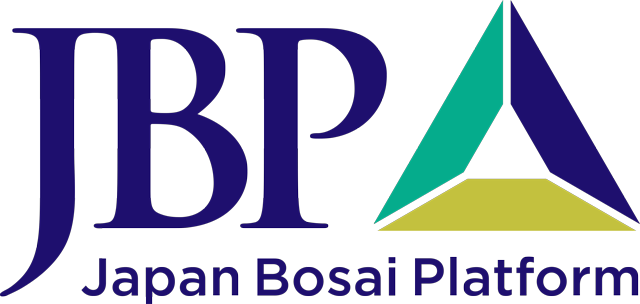
Bosai Solution ID : JBP00005

Implant™ Confined Ground Seismic Damper
Liquefaction Prevention by Enclosure of Base Ground
Hazard
Solution Purpose
Solution Theme
Technology Subject
Advantages
Solution Illustrated
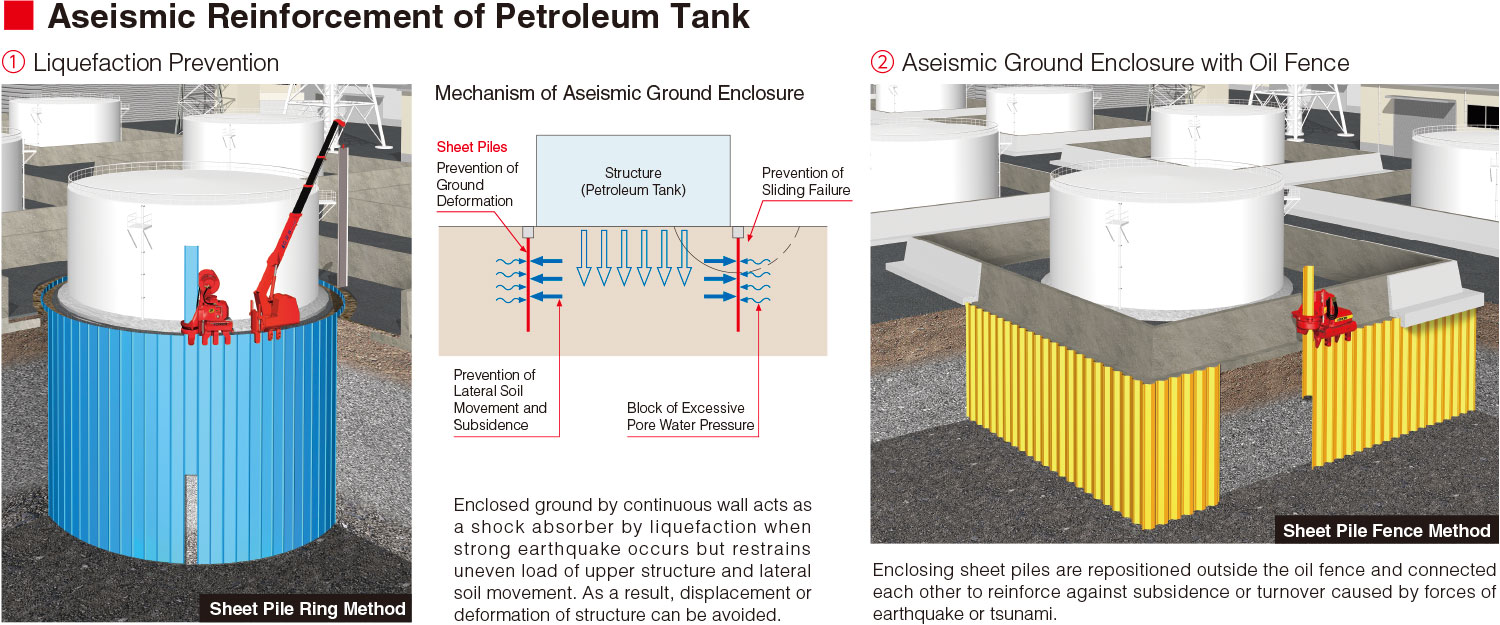
In Aseismic Ground Enclosure, sheet pile walls have 5 major functions to protect structures from earthquakes.
- Prevention of Sliding Failure: Sheet pile walls around a structure block occurrence of sliding failure caused by shaking and liquefaction.
- Prevention of Ground Deformation: Sheet pile walls block ground deformation inside the enclosure.
- Prevention of Sideways Soil Movement: Sheet pile walls block sideways movement of liquefied soil and keep it inside the enclosure.
- Prevention of Excessive Pore Pressure: Sheet pile walls block pore pressure transmitting outwards and also inwards from surrounded ground.
- Prevention of Uneven Load: Sheet pile walls receive load of structures and guide it to vertical direction inside the enclosed area.
Background
Liquefaction caused by Earthquake
When severe shaking associated with earthquakes occurs in the ground with underlying waterlogged layers, once firm ground temporarily turns into a fluidlike mass because of increased pore pressure and reduced effective stress between solid particles. This phenomenon is called liquefaction.
Damages caused by Liquefaction
Liquefaction and related phenomena have been responsible for tremendous amounts of damage in historical earthquakes around the world. Liquefied ground can no longer support the weight of buildings, so these tend to sink. The overlying ground can also sink, spread and crack. Water fountains and sand boils can burst upwards through any cracks. Underground pipes and tanks float and break. Power poles fall and break cables. And the port has been built on artificial islands collapses.
A Solution discovered at Disaster Sites
Through a great number of researches at disaster sites, we discovered an effective solution. In a disaster area, there was one undamaged house surrounded by many severely damaged ones. The house stands on the ground that was enclosed by steel sheet piles. They should have been extracted after completion but left without apparent reason. It showed us the empirical proof of the effect of Aseismic Ground Enclosure.
Exposition of the Solution
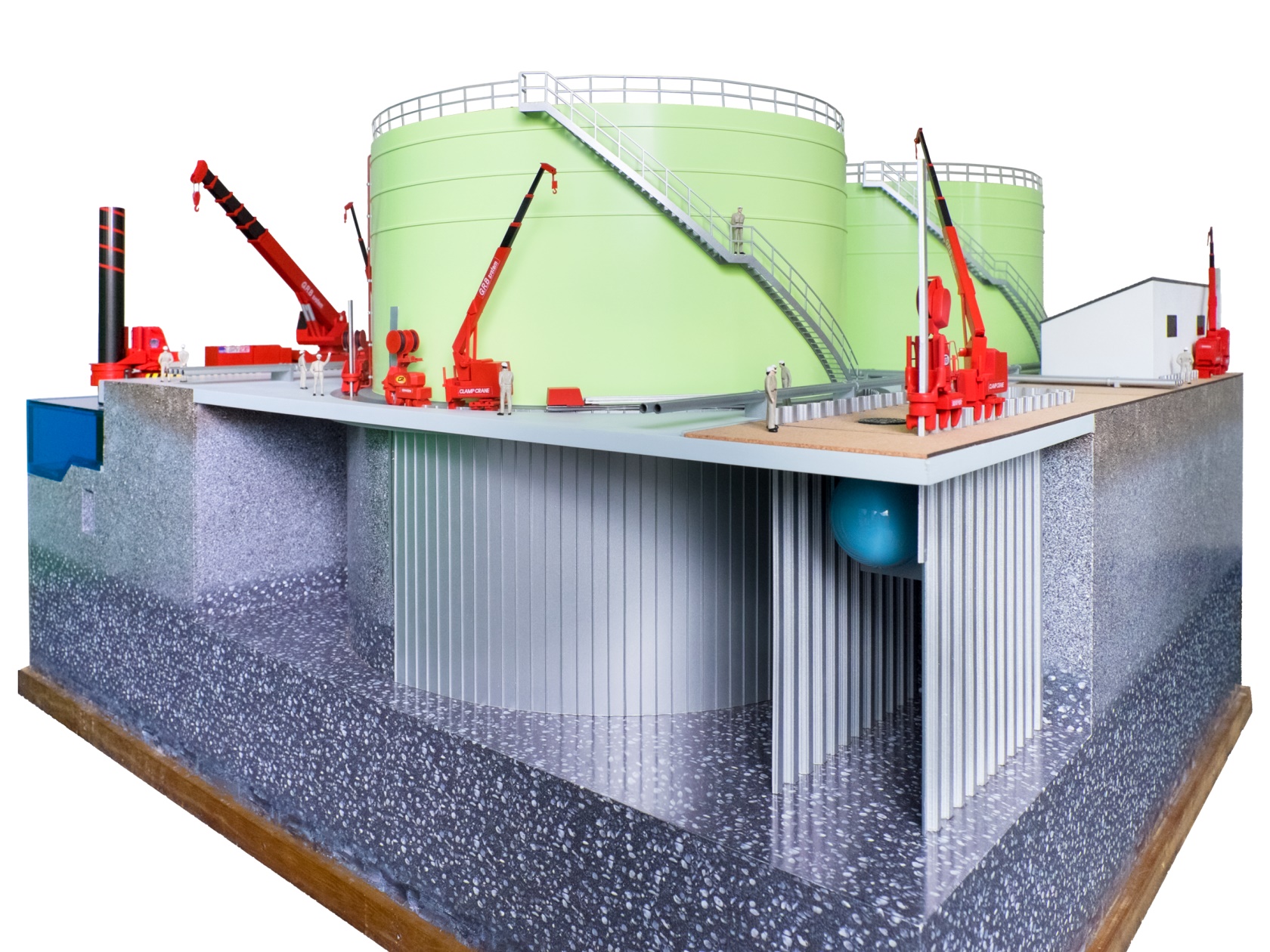 Implant Structure (Principle)
Implant Structure (Principle)
Implant Structure consists of an "allowable structural member" that is combined with structural and foundation elements. Every structural member is pressed-in and securely supported by the Earth. Therefore, it is highly resistant to ground displacement caused by the motion of earthquakes, tsunami, and other external forces, serving as a “resilient” disaster-prevention infrastructure.
Aseismic Ground Enclosure (Application)
All advantages of Implant Structure are applied to Aseismic Ground Enclosure. It is a kind of seismic base isolation but doesn’t require isolation units between foundations and superstructures. Being enclosed by sheet piles, the ground on structures starts behaving as energy-absorbing soil block. Liquefaction is a phenomenon occurred as the result of that energy of seismic movement was absorbed. The critical effect of liquefaction is uneven settlement and sideways movement of liquefied soil afterwards. As they are confined to inside of the enclosure, the ground can maintain support of structures in the most similar condition to the original state before earthquakes.
Implant Method (Construction)
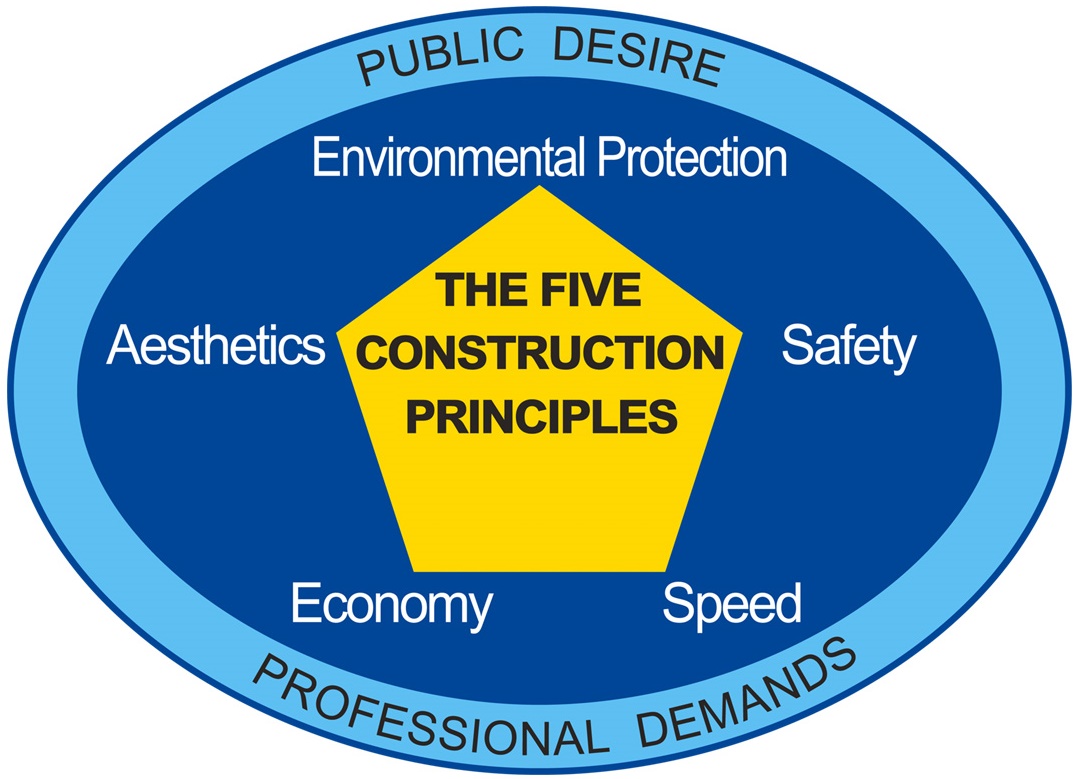 Pile walls are constructed by Press-in Method that utilises reaction force derived from pre-installed piles to hydraulically push into the ground silently and vibration-free. As all necessary press-in machinery systematically works on the top of pile walls, it minimises working space and eliminates a need for temporary platform even on slope, unlevelled ground or above water. Thus the Implant Structure can be constructed whilst fully satisfying the Five Construction Principles, which include consideration of environmental protection, safety, speed, economy and aesthetics in the form of a balanced equilateral pentagon.
Pile walls are constructed by Press-in Method that utilises reaction force derived from pre-installed piles to hydraulically push into the ground silently and vibration-free. As all necessary press-in machinery systematically works on the top of pile walls, it minimises working space and eliminates a need for temporary platform even on slope, unlevelled ground or above water. Thus the Implant Structure can be constructed whilst fully satisfying the Five Construction Principles, which include consideration of environmental protection, safety, speed, economy and aesthetics in the form of a balanced equilateral pentagon.
Achievements of Examples
Wide Application to Various Structures
Aseismic Ground Enclosure can basically apply to any buildings and infrastructures that contact the ground. From achievements of GIKEN, this technology has already applied to embankment of railways and roads, bridge foundations, underground installation like water tank, grit chambers, petroleum tanks, houses and buildings, and quay walls. Embankment of Shinkansen bullet train was also reinforced by this technology. An application to petroleum tanks is particularly called Implant Ring Method after shape of enclosure and adopted to many tanks. Double sheet pile wall of Implant Levee is also functioning as Aseismic Ground Enclosure.
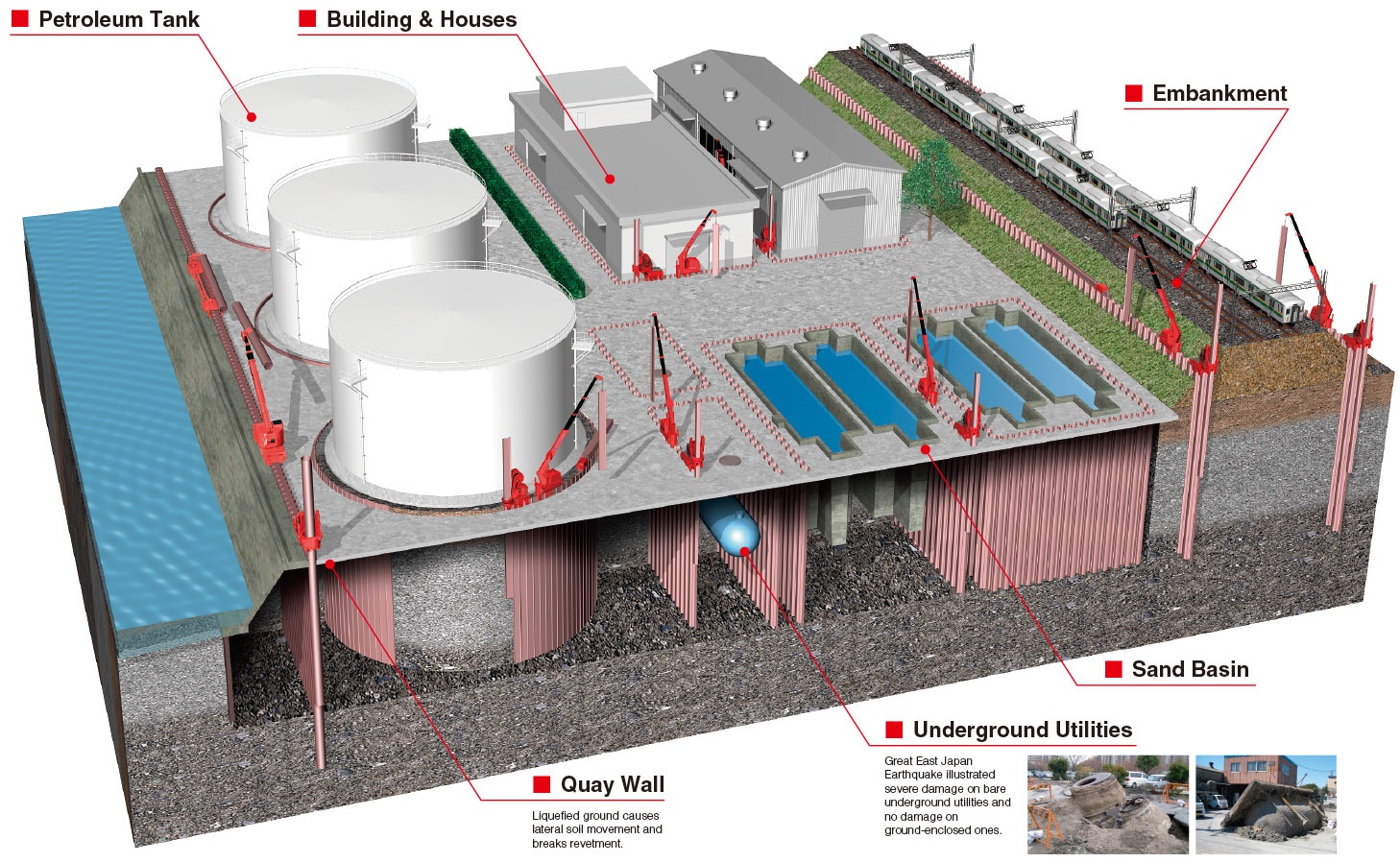
Evidence by the Great East Japan Earthquake of March 11, 2011
The effectiveness of Aseismic Ground Enclosure was proved by the earthquake. Engineers of GIKEN visited disaster sites and confirmed that the applied structures were safe and maintaining the original state without damage, whereas unapplied structures were damaged by settlement, crack, floating and breakage.
Proactive Measures against the greatest Nankai Megathrust Earthquakes
Since the the Great East Japan Earthquake, Japanese government has been strongly promoting proactive measures against the forth-coming earthquakes in parallel with disaster restoration works. Implant Levee consisting of Aseismic Ground Enclosure has been adopted to protect lives and cities from the threat of earthquake tsunami.
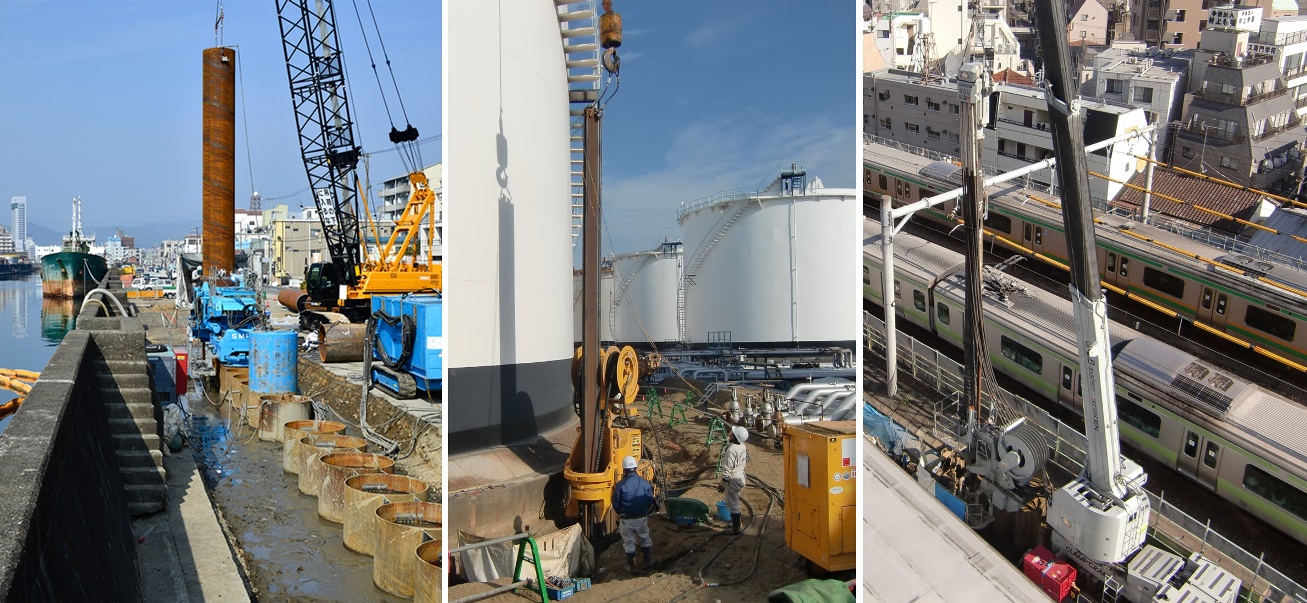
Corporate Profile
GIKEN LTD.
16F Ariake Central Tower, 3-7-18 Ariake, Koto-ku, Tokyo 135-0063, Japan
Tel. :
E-mail : internationalgiken.com
Website : https://www.giken.com/en/

